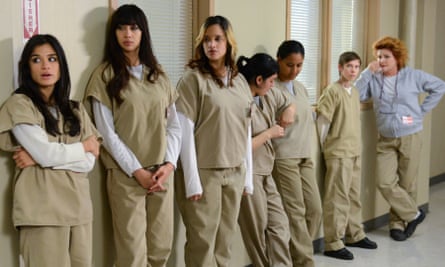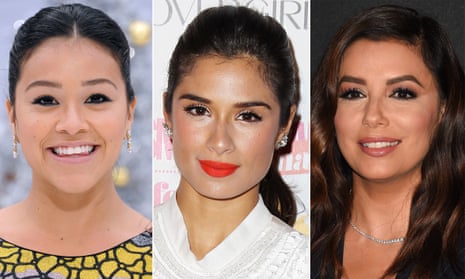When the current administration announced that Deferred Action for Childhood Arrivals (Daca) would be coming to an end, Hollywood reacted. Ava DuVernay, Shailene Woodley, Lin-Manuel Miranda, Cristela Alonzo and many others used social media and other platforms to voice their concern.
DuVernay called the move a “disgusting display of prejudice, ignorance and heartlessness”. Celebrities including Woodley tweeted information about the impact of Daca with the hashtags #DefendDACA and #HeretoStay. Miranda kept it short and simple: “Okay. The Bad Man continues to do bad. Your move, Congress.”
Early this year, the Opportunity Agenda analyzed TV programs that aired between 2014 and 2016 that portrayed immigrants and found that 50% of Latino immigrant characters had committed a crime of some sort. The organization also found an imbalance in the ethnic makeup of immigrants depicted: 66% were white. Statistics like those are driving change within the industry.
“We believe that if we affect culture, then the politics will change after that,” said Kristen Marston, the entertainment media manager of Define American, a not-for-profit media organization that seeks to shift perceptions of immigrants in the US. “So we really work to shift the culture surrounding immigrants in this country.”
To dispel negative depictions like these, Define American consults with major networks such as NBC and streaming services such as Hulu on forthcoming television shows that depict immigrant characters and stories. The focus is on breaking down stereotypes by helping networks create more complex and accurate portrayals of immigrants and immigration.
The organization’s entertainment media director, Elizabeth Grizzle Voorhees, and Marston led the research for the recently released Immigrants and Immigration: A Guide for Entertainment Professionals. Described as a “toolkit”, the guide serves as a glossary, ethical guide, legal facts resource and more for “all entertainment industry professionals ... who may be working on or interested in developing an immigrant- or immigration-related storyline”. It delves into the impact of immigrants on the economy, the effects of losing Daca and the history behind migration and deportation.
The industry itself is also driving a shift in immigrant portrayals. There’s been a slew of green-lit TV series centering on immigration. The Orange is the New Black star Diane Guerrero is the showrunner on Casa, a series based on her recently published memoir.
Gina Rodriguez, star of Jane the Virgin, will executive-produce Illegal, which centers around a 16-year-old discovering that he is undocumented. The show takes inspiration from the Jane the Virgin writer Rafael Agustín’s real-life experiences. Rodriguez has also sold Have Mercy, which follows the immigration struggles of a Latina doctor, to CBS.
Rodriguez told the Los Angeles Times that many of her social media followers felt grateful to hear about the project: “I saw a lot of kids in my feed happy that their stories – or at least an aspect – are finally getting told. I’m not just talking about Daca or undocumented. I’m talking about all Latinos in this country wanting to feel present in this country and loved and supported.”

Reboots of popular 90s shows are also being rethought and respun as immigration dramas. The 1999 series Roswell will soon get a modern makeover that features a character with undocumented parents. “An immigration twist” might also appear in a forthcoming revival of Party of Five.
Even though conversations about diversity continue to take place in Hollywood, Marston points out that many times immigrant narratives get left out. Last week, Glaad’s annual report found that while LGBTQ characters are appearing on the small screen in record numbers, 77% of those characters are gay white men. When immigrant characters do get included in small-screen series, the story is often a “fear-based narrative” in which the fear is being deported – without much complexity given to the character otherwise.
“When we started doing this work, immigrants weren’t necessarily being talked about in the context of the larger diversity conversation in Hollywood,” says Marston.
Even if showrunners and writers aren’t currently focusing on including immigrant narratives, Marston hopes that the guide will serve as a resource when this narrative comes up in the future. The guide includes answers to many questions that Define American has received in the past. And it homes in on some of the major stereotypes around immigration, not just on an individual level but on a larger, political one. The guide points out, for example, that “undocumented immigrants are often assumed to be Mexican”, but that in fact the fastest-growing undocumented group is Asian immigrants.
TV series can easily affect thoughts on immigrants and their narratives; Opportunity Agenda found that 86% of adults watch TV about five days a week. Many people might well form their first opinions about immigrant narratives based on what they see on television, whether consciously or not. Furthermore, many immigrants only see themselves depicted in a negative light.
“Storytellers hold a lot of power to impact our culture,” says Marston. “I think people in the entertainment industry are starting to realize the power that they have in that way, which is a good thing, right, in that they have the ability to do good and to tell people’s stories more inclusively.
“When people aren’t seen they start to feel like they’re not important and like they’re invisible,” she adds. “A lot of people felt that way … for me personally, I didn’t grow up seeing a single-parent family on TV or a mixed-race family on TV, so things like that’s really why I do this work.”
Marston feels excited for series that will tackle immigrant narratives in the near future. She hopes that instead of “putting something out that could be harmful in the long run”, showrunners and writers will use resources like the Define American media guide to expand the conversation about immigration.
She also hopes to see “more shows about immigrants in general, as immigrants begin to become more a part of the overall diversity conversation in Hollywood”, beyond questions of US policy. Immigrants, she argues, should be portrayed not just as stereotypes in a story but as complex individuals.

Comments (…)
Sign in or create your Guardian account to join the discussion